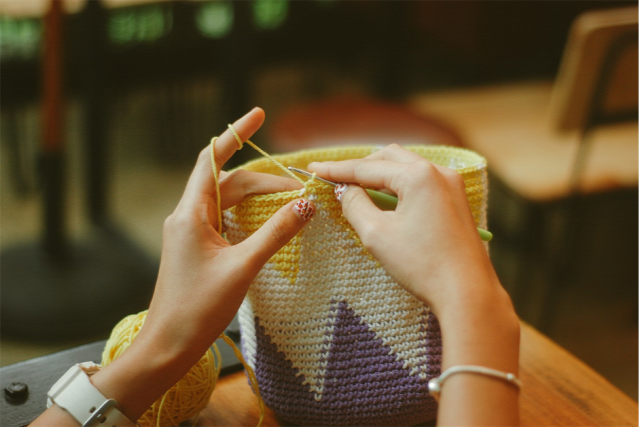
The desire to expedite project completion is a common thread among crocheters of all skill levels. The prospect of completing projects faster is always appealing. To make the crochet process swift, various stitch types can benefit everyone, regardless of their skill level. Keep on reading for an in-depth exploration of the fastest crochet hook stitches.
Easiest and Quickest Crochet Stitches
Undoubtedly the champion of celerity, the double crochet stitch whips up a medium-weight fabric at lightning speed. Each double crochet uses just two loops on your crochet hook, minimizing the manipulation and maximizing speed. With DC, you can craft scarves, amigurumi toys, and many more things with the help of single ended crochet hooks .
The hdc emerges as a close contender in the swift crocheting genre. It employs three loops on the hook, resulting in a slightly denser fabric compared to the double crochet. While marginally slower, the hdc offers advantageous structural integrity for projects requiring quality. Hdc is frequently used in crocheting scarves, beanies, and sweaters with the help of double ended crochet hooks or any other hooks. It works pretty quickly making it a good crochet stitch for making blankets as well.
For crocheters seeking to outpace their previous efforts, tr crochet beacons truly. Tr utilizes three loops on the hooks, taller than dc, it covers more ground with each stitch, making rows fly by.
Don't let the name fool you—granny squares can be surprisingly fast. These colorful squares use basic double crochet stitches and come together in a jiffy, even for beginners. Since this stitch is versatile, you can try this even on a Tunisian crochet hook .
A paragon of simplicity, a moss stitch entails a single-row repeat of single crochets worked exclusively in the back loop only. This stitch yields a delightful textured fabric and accumulates quickly.
Since it's so lightweight, it's a great crochet stitch to work up and perfect for summer blankets. The mesh stitch allows for lightweight crocheting, speeding up project completion. It's super friendly for beginners and uses only basic crochet stitches such as single crochet and chain stitch. Just grab a yarn and a suitable crochet hook and start crafting your stunning summer projects with this airy stitch type.
Helpful Tips to Master the Crochet Speed
Optimize hand and hook movement: Employ a relaxed and firm grip on the crochet hook, potentially experimenting with the lower hold for enhanced dexterity. Focus on creating smooth, consistent motions during stitch execution, aiming for uniformity in time spent per stitch.
Maintain Yarn Management: To minimize yarn interruption, use yarn from the center of a ball to prevent snags. Consider using a yarn bowl for additional control and to deter tangles.
Choose Appropriate Tools: The crochet hook size should be carefully chosen to complement the yarn weight being used. A well-matched hook size facilitates efficient yarn manipulation.
Maintain Good Posture: Good posture is also vital during crocheting. If possible, take adequate back support, as this prevents fatigue and allows for longer crafting sessions.
Reduce color shifts: Changing the color takes time because additional ends need to be cut and woven in. Look for a pattern with few or no color changes if you need to finish the job quickly.
Practice the Stitch: Yes... it's the most valuable tip for so many reasons. If you have previously worked up with the stitch, you are more likely to work it up quickly. But if you are trying a new stitch, you need to fit it into your muscle memory. You will be more adept at a stitch the more comfortable you are with it. Also, it enhances your tension, which gives you a more professional look.
Now that we have come to the end of this blog, you must be familiar with the fastest stitch types and helpful tips. Try them out and become a crochet pro.


 Are you looking for fun crochet patterns for summer? Then, get ready to be inspired for the season. Just bring your favorite
Are you looking for fun crochet patterns for summer? Then, get ready to be inspired for the season. Just bring your favorite 